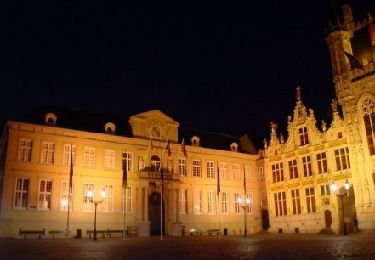

't Zand' is the largest square in Bruges, and also the most open and modern-looking one.
Already in the 13th century, a horse and cattle market was held at the square. The function of the square went on changing throughout the centuries, from a political showplace in the 13th century up to the largest cattle market in Flanders in the 18th century. 't Zand was eventually turned into a railway line station in the 19th century, linked by extensive accommodation for travellers. The square place is currently again the location for a weekly public market on Saturdays.
The two first railway stations in Bruges were built on the square. The line Ghent - Bruges - Ostend was inaugurated in 1838, but the first station was already demolished in 1879. For the construction of the second railway station, which was completed in 1886, it was necessary to completely demolish the former Capuchin cloister and its church! The second railway station was already abandoned in 1938, and was on its turn demolished in 1948. Since then, 't Zand has again been an open area, as it used to be before 1838. At the place where the railway lines used to be, a new urban park was laid out ('Koning Albertpark') at the end of the 1990's. The new railway station, currently still in use, was constructed at the side of the old town.
The name "'t Zand" (the sand) was given after the second railway station was destroyed in 1948, to recall the former natural sand ridge that used to extend from there to the 'Burg' square, long ago... Major works were again undertaken at 't Zand from 1978 to 1982, when a road tunnel and a major parking area (5 levels) able to accommodate 1435 cars were constructed under the ground. In the middle of the square there is a public fountain flanked by four sculpture works by artists Stefaan Depuydt and Livia Canestraro (1985-'86), and depicting scenes from the former life in Bruges.

Walking


User